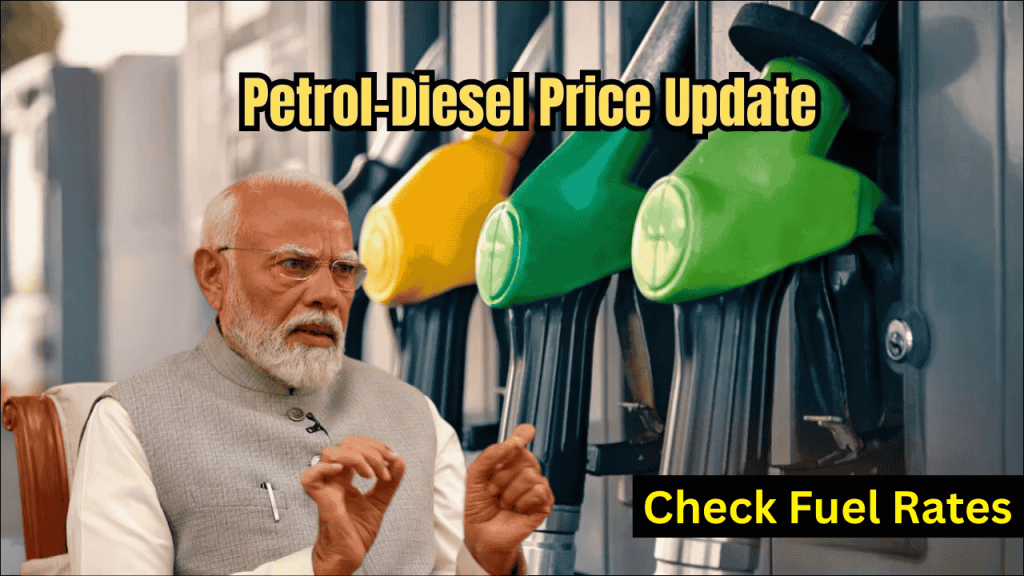
The oil marketing companies (OMCs) have announced fresh petrol and diesel prices effective today, continuing the trend of daily price revisions that returned after the conclusion of the general elections. These adjustments reflect changes in international crude oil prices, currency exchange rates, and other market factors that influence domestic fuel pricing in India.
Table of Contents
Current Price Trends and Market Dynamics
The latest fuel price adjustments come amid fluctuating global crude oil benchmarks. Brent crude, the international standard, has been trading in the range of $80-85 per barrel in recent weeks, influenced by geopolitical tensions, OPEC+ production decisions, and global economic outlook concerns. These international price movements, combined with the rupee-dollar exchange rate variations, directly impact the retail fuel prices across India.
The government deregulated petrol prices in 2010 and diesel prices in 2014, allowing OMCs like Indian Oil Corporation (IOC), Bharat Petroleum Corporation Limited (BPCL), and Hindustan Petroleum Corporation Limited (HPCL) to adjust prices daily in accordance with international market dynamics. However, these companies often moderate extreme price fluctuations to minimize impact on consumers.
Latest Fuel Prices Across Major Indian Cities
The latest revision shows varying prices across different cities, primarily due to differences in state-level taxes, freight charges, and local levies. Here’s a comprehensive overview of current petrol and diesel prices in major Indian cities:
| City | Petrol (₹/liter) | Diesel (₹/liter) |
|---|---|---|
| Delhi | 96.72 | 89.62 |
| Mumbai | 106.31 | 94.27 |
| Chennai | 102.63 | 94.24 |
| Kolkata | 106.03 | 92.76 |
| Bengaluru | 101.94 | 87.89 |
| Hyderabad | 109.66 | 97.82 |
| Ahmedabad | 96.63 | 92.38 |
| Lucknow | 96.57 | 89.76 |
| Jaipur | 108.48 | 93.72 |
| Patna | 107.24 | 94.04 |
| Bhopal | 108.65 | 93.90 |
| Chandigarh | 96.20 | 84.26 |
| Guwahati | 97.34 | 89.22 |
| Thiruvananthapuram | 109.73 | 98.53 |
| Bhubaneswar | 103.19 | 94.76 |
| Raipur | 98.93 | 92.60 |
Factors Influencing Fuel Price Variations Across Cities
The significant price differences observed across various Indian cities can be attributed to several key factors:
State-Specific Taxation
Value Added Tax (VAT) on petroleum products varies significantly across states, ranging from 10-30% depending on state government policies. States like Maharashtra, Rajasthan, Madhya Pradesh, and Telangana typically impose higher VAT rates, resulting in higher retail prices in cities like Mumbai, Jaipur, Bhopal, and Hyderabad respectively.
Transportation and Logistics Costs
The distance from refineries and oil depots to retail outlets affects the transportation cost component of fuel prices. Cities located far from supply points generally experience slightly higher prices due to additional freight charges.
Local Municipal Taxes
Some cities impose additional levies like municipal taxes, entry taxes, or environmental cesses, further contributing to price variations. These local charges can add anywhere from ₹1-3 per liter to the final retail price.
Dealer Commissions
Though regulated, dealer commissions can vary slightly across locations, adding another dimension to the price differences observed between cities.
Recent Price Trends and Future Outlook
Over the past month, fuel prices have shown moderate fluctuations, with an overall slight upward trend in most cities. Petrol prices have increased by approximately 1-2% on average, while diesel prices have seen marginally higher increases in the range of 1.5-2.5%.
Looking ahead, several factors could influence fuel prices in the coming weeks:
Geopolitical Developments
Ongoing conflicts in oil-producing regions, particularly in the Middle East, continue to pose risks of supply disruptions that could drive international crude prices higher.
OPEC+ Production Decisions
The Organization of the Petroleum Exporting Countries (OPEC) and its allies are scheduled to review their production strategies in the coming months. Any decisions to further cut or increase production quotas would directly impact global oil prices and, consequently, Indian fuel prices.
Rupee-Dollar Exchange Rate
The Indian rupee’s performance against the US dollar remains a critical factor, as crude oil imports are denominated in dollars. Any significant depreciation of the rupee would increase the cost of imports and potentially lead to higher domestic fuel prices.
Domestic Tax Policy Considerations
With inflation concerns and fiscal pressures, the central and state governments might reconsider the current tax structure on petroleum products, which could either provide relief or add to the burden on consumers.
Impact on Consumers and the Economy
The latest fuel price adjustments have varying implications for different stakeholders:
Household Budgets
For the average Indian consumer, fuel prices constitute a significant portion of monthly transportation expenses. The recent increases add pressure to household budgets already strained by inflation in other essential commodities.
Transportation and Logistics Sector
Commercial transportation operators, including trucking companies and public transport services, face increased operational costs with rising diesel prices, potentially leading to higher freight and passenger fares.
Inflation Concerns
Fuel price increases typically have a cascading effect on the prices of various goods and services due to higher transportation costs, contributing to overall inflation in the economy.
Industrial Competitiveness
Energy-intensive industries face higher input costs with increasing fuel prices, potentially affecting their competitiveness, especially in export markets.
Government Perspective and Policy Considerations
The central and state governments face a delicate balancing act regarding fuel prices. While high taxes on petroleum products contribute significantly to government revenues—essential for funding various development programs and subsidies—excessive prices can fuel inflation and public discontent.
Some state governments have occasionally reduced their VAT rates to provide temporary relief to consumers, but such measures typically result in revenue losses that must be compensated through other sources or reduced expenditure.
Frequently Asked Questions
How often do fuel prices change in India?
Technically, fuel prices in India are revised daily based on a dynamic pricing formula that accounts for international crude oil prices, currency exchange rates, and other market factors. However, during politically sensitive periods like elections, price revisions are sometimes paused or moderated.
Why do fuel prices vary across different cities in India?
Fuel price variations across cities primarily result from different state-level taxes (VAT), which can range from 10-30% depending on the state. Additional factors include transportation costs from refineries to retail outlets, local municipal taxes, and differences in dealer commissions.
What portion of the retail fuel price goes to the government as taxes?
Currently, approximately 50-60% of the retail price of petrol and 40-50% of diesel constitutes various taxes and levies imposed by the central and state governments. This includes excise duty levied by the central government and VAT imposed by state governments, along with other smaller cesses and surcharges.

